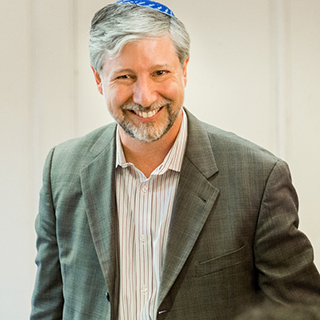Kinim 3:6

The silver lining of aging and death
האשה שאמרה הרי עלי קן כשאלד זכר, ילדה זכר, מביאה שתי קנים, אחת לנדרה ואחת לחובתה. נתנתם לכהן, והכהן צריך לעשות שלש פרידים מלמעלן ואחת מלמטן, לא עשה כן, אלא עשה שתים למעלן ושתים למטן ולא נמלך, צריכה להביא עוד פרידה אחת ויקריבנה למעלן, ממין אחד. משני מינין, תביא שתים. פרשה נדרה, צריכה להביא עוד שלש פרידים, ממין אחד. משני מינין, תביא ארבע. קבעה נדרה, צריכה להביא עוד חמש פרידים, ממין אחד. משני מינין, תביא שש. נתנתם לכהן ואין ידוע מה נתנה, הלך הכהן ועשה ואין ידוע מה עשה, צריכה להביא עוד ארבע פרידים לנדרה, ושתים לחובתה, וחטאת אחת. בן עזאי אומר: שתי חטאות. אמר רבי יהושע: זה הוא שאמרו כשהוא חי קולו אחד, וכשהוא מת קולו שבעה. כיצד קולו שבעה, שתי קרניו שתי חצוצרות, שתי שוקיו שני חלילין, עורו לתוף, מעיו לנבלים, בני מעיו לכנורות. ויש אומרים: אף צמרו לתכלת. רבי שמעון בן עקשיא אומר: זקני עם הארץ, כל זמן שמזקינין, דעתן מטרפת עליהן, שנאמר (איוב יב) מסיר שפה לנאמנים וטעם זקנים יקח. אבל זקני תורה אינן כן, אלא כל זמן שמזקינין דעתן מתישבת עליהן, שנאמר (שם) בישישים חכמה וארך ימים תבונה.
Rabbi Joshua teaches: There is a saying that when [an animal such as a ram] is alive, it has one voice, but when it dies it has seven voices. How does it have seven voices? Its two horns become two trumpets; its two thigh-bones become two flutes; its hide becomes a drum [head]; its intestines are used for wind instruments; its sinews for string instruments. Some say: its wool is also used for tekhelet.
Rabbi Shimon ben Akashya teaches: The elderly among the common folk grow senile as they age, as it says, “[God] removes language from the faithful and takes sense from the elderly” (Job 12:20). But it is not so with the elders of Torah. Rather, as they age their sense remains with them, as it says, “With the elderly is wisdom, and with long days is insight” (Job 12:12).
Comments
This volume deals primarily with birds designated for sacrifice, for example, by women who have given birth. The final mishnah ends with several apparent non sequiturs. The organizing principle seems to be that aging and even death need not be viewed as the diminution of capacity for either animals or people. Animals are understood to have a “voice” both in life and in death. The precise use of various animal body parts to construct ancient musical instruments is unknown, but the care to avoid wasting these materials is apparent. The claim made here that Torah wisdom fends off senility may seem wistful, yet it is true that maintaining an active mind through life-long study can preserve vigor into old age. In the realm of Seder Kodashim that this mishnah concludes, animals are valued not only for their physical utility but also for the spiritual power that their life and death conveys to the Temple and its worshippers.
Questions
- Is the ritual use of animal bodies as sacrifices or even sacred musical instruments dignifying, or simply primitive?
- Does contemporary culture cultivate elder-wisdom or diminish it?



